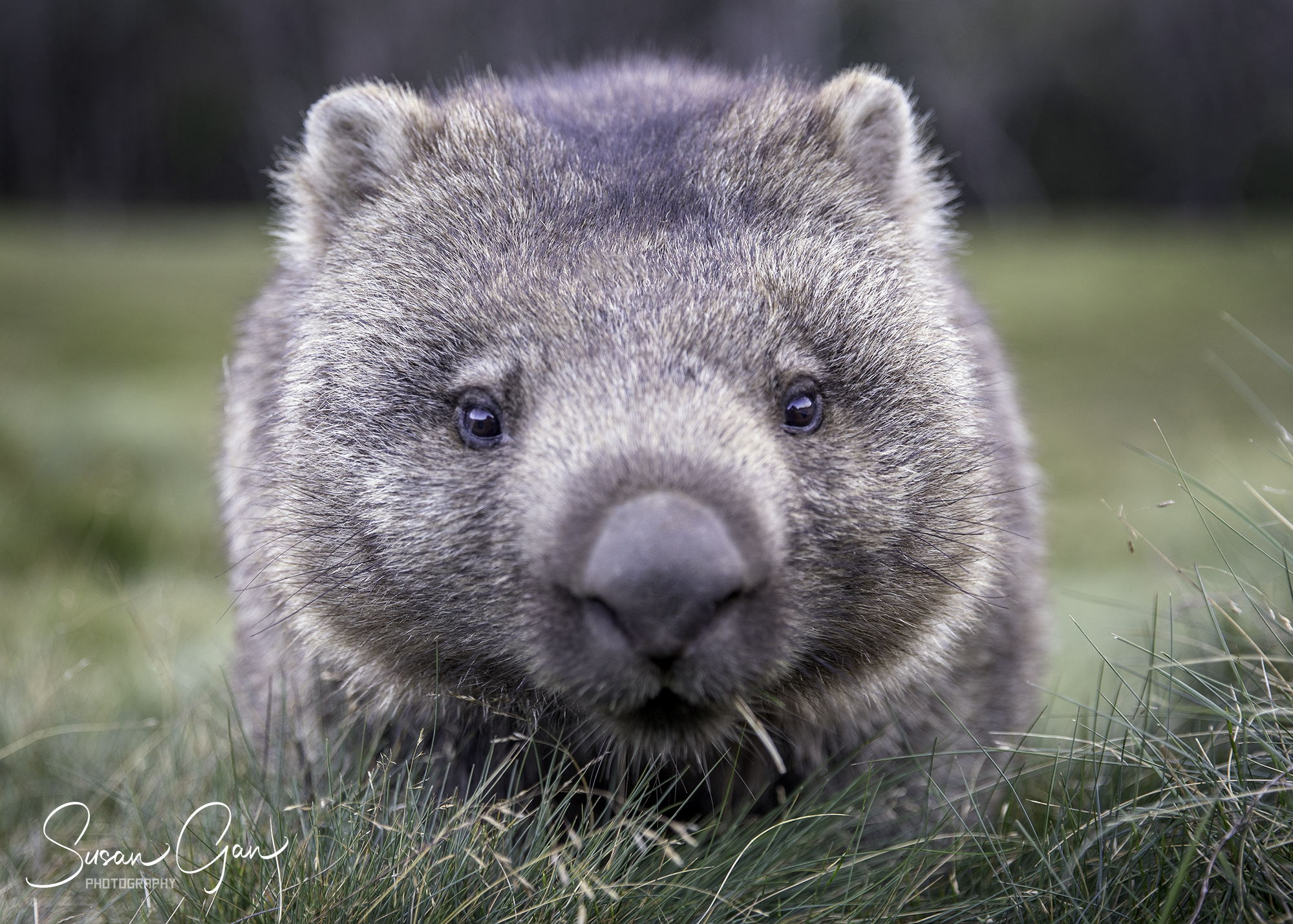Best Places to See Wombats in Australia
Best Places to See Wombats in Australia
The best places to see wombats in Australia are often tucked into the country’s most scenic and wildlife-rich regions. These burrowing marsupials thrive in the cooler, forested parts of southeastern Australia—including Tasmania, Victoria, New South Wales, the ACT, and parts of South Australia. While wombats are typically most active around dawn and dusk, daytime sightings are common in colder climates like Tasmania.
Australia is home to three wombat species: the Common wombat, the Southern Hairy-nosed wombat, and the critically endangered Northern Hairy-nosed wombat. Since the latter lives in a protected reserve with no public access, this guide focuses on wild wombat encounters and ethical viewing opportunities with the more commonly seen species.
Ethical Wildlife Encounters: How to See Wombats Responsibly
Wombats are wild animals and deserve our respect. To ensure your encounter is safe—for both you and the wombat—follow these simple but important guidelines:
-
Never feed wombats (even in campgrounds)
-
Avoid walking between a wombat and its burrow
-
Keep dogs leashed in wombat habitats
-
Drive slowly at dawn and dusk — wombats are low and hard to see
-
Give wombats space — if they move away, you’re too close
-
Stay on marked trails to avoid disturbing burrows
-
Use red light at night to minimize disruption while spotlighting
-
Don’t block a wombat’s path — they follow familiar routes
-
Report injured wombats to local wildlife rescue groups
By following these tips, you’ll help protect wombats and ensure future visitors can enjoy the same magical experiences.
Best Places to See Wombats in Australia by State
Wombats can be found across several southern and eastern states, but your chances of spotting one vary depending on the region and time of year. To help you plan your wildlife adventure, here’s a state-by-state guide to the best places to see wombats in Australia.
Australian Capital Territory
The bushland around Canberra is home to healthy wombat populations, particularly within the national parks.
Top Wombat Viewing Location in the ACT:
-
Namadgi National Park – Great for hiking and spotting wombats in the wild, especially near creek crossings and grassy clearings.
New South Wales
NSW has several reliable wombat hotspots, often near bushwalking trails or in regional reserves. Patience helps — these wombats are more wary than their Tasmanian cousins.
Top Wombat Viewing Locations in NSW:
- Booderee National Park (Jervis Bay) – Wombats can sometimes be seen near campsites and walking trails.
- Bundanoon (Southern Highlands) — A charming village with nearby trails where wombats are frequently spotted, especially at dusk
-
Jenolan / Blue Mountains – Occasional sightings, especially near secluded bush tracks.
- Kangaroo Valley (Bendeela Campground) — A wombat haven! Visitors often report seeing multiple wombats grazing during the day, especially around the campground.
- Lake Bathurst region – South of Goulburn, this area is known for roadside sightings near dusk.
Northern Territory
Wombats are not found in the wild in the Northern Territory. Their natural range does not extend into the Top End or central deserts. If you’re visiting the NT, you’re more likely to encounter rock wallabies, dingoes, or reptiles than wombats.
Where to Learn About Wombats in the NT:
-
Alice Springs Desert Park – Occasionally features wombats in its nocturnal house or educational exhibits.
-
Territory Wildlife Park (near Darwin) – May house wombats in captivity as part of native species education programs.
📝 Note: For wild wombat encounters, head south to South Australia or east to New South Wales.
Queensland
Queensland is home to one of the world’s rarest mammals — the Northern Hairy-nosed Wombat. However, they are not viewable by the public, as they live in a strictly protected reserve.
Top Wombat Viewing Location in QLD:
-
Epping Forest National Park (no public access) – The only place where Northern Hairy-nosed Wombats survive in the wild. Viewing is restricted to researchers.
📝 Note: If you’re keen to learn about this species, consider visiting conservation centres or following Queensland Government updates on recovery efforts.
South Australia
Wombats in South Australia are less commonly seen by the general public, but they’re out there — especially in the semi-arid regions.
Top Wombat Viewing Locations in South Australia:
- Brookfield Conservation Park — A lesser-known reserve northeast of Adelaide, home to Southern Hairy-nosed Wombats in semi-arid scrubland.
-
Flinders Ranges – Keep an eye out on dusk drives or remote hikes.
-
Gawler Ranges / Eyre Peninsula – Remote but home to Southern hairy-nosed wombats.
Tasmania
Tasmania is arguably the best state in Australia to see wombats in the wild — particularly during the day. These wombats are comfortable in open grassy areas and are often spotted on walking trails and near campsites.
Top Wombat Viewing Locations in Tasmania:
- Bruny Island — While better known for penguins and white wallabies, wombats are occasionally spotted in the island’s inland forests.
- Cradle Mountain / Ronny Creek – The boardwalk trail near Ronny Creek is a scenic and reliable place for wombat sightings.
- Freycinet National Park — Wombats are sometimes seen near campsites and walking tracks, particularly around dusk.
-
Maria Island – Arguably Australia’s most famous wombat hotspot. Wombats graze freely around Darlington and the walking tracks.
-
Narawntapu National Park – Nicknamed “the Serengeti of Tasmania,” this coastal park is fantastic for wombat spotting at dusk.
Victoria
Victoria offers excellent wombat viewing, particularly in its coastal national parks. While mostly nocturnal, wombats here can be spotted at dusk or during overcast days.
Top Wombat Viewing Locations in Victoria:
-
The Grampians – Though more elusive here, wombats do live in the park, especially in quieter areas.
- Great Otway National Park — Wombats are occasionally seen near forested trails and campsites, especially around Aire River and Blanket Bay.
- Healesville Sanctuary — While not a wild setting, this conservation-focused zoo offers close encounters and educational talks about wombats.
- Tower Hill Wildlife Reserve – A lesser-known gem near Warrnambool, great for self-drive wildlife spotting.
- Wilsons Promontory National Park – Wombats are frequently seen around Tidal River campground and the walking trails.
Western Australia
Wombats are not native to most of Western Australia, but some Southern Hairy-nosed Wombats live near the SA/WA border in remote areas. Sightings are rare and typically limited to scientific research zones or private land.
Top Wombat Viewing Location in WA:
-
Near the Nullarbor Plain (border region) – Sightings are uncommon but possible in far eastern WA.
📝 Note: There are currently no well-known public wombat viewing locations in WA.
📚 What Are Wombats, Scientifically Speaking?
Wombats are short-legged, burrowing marsupials that belong to the family Vombatidae. Though they may look like small bears or overgrown rodents, they’re actually more closely related to koalas — their closest living relatives.
Wombats are known for their strong claws, backward-facing pouch, and cube-shaped poo — a helpful adaptation for marking territory without it rolling away!
Here’s how wombats are classified:
(Vombatus ursinus)
(Lasiorhinus latifrons)
(Lasiorhinus krefftii)
🦴 Fun Fact: All wombats have continuously growing teeth, like rodents. This allows them to grind tough native grasses and roots throughout their lives.
🤔 Wombat Species in Australia: What You Might See
Australia is home to three unique wombat species. While they all share that unmistakable waddle and burrowing lifestyle, there are some fascinating differences in their appearance, habitat, and conservation status.
💡 Important note: With fewer than 300 individuals left in the wild, the Northern Hairy-nosed Wombat is one of Australia’s most critically endangered mammals—and a powerful reminder of the need for conservation.
See Wombats in the wild
Discover our top 5 picks for seeing wombats in their natural habitat — from alpine boardwalks to coastal trails, these are Australia’s most unforgettable wombat encounters.
Maria Island, Tasmania
Ronny Creek Boardwalk, Cradle Mountain, TAS
Narawntapu National Park, Tasmania
Wilsons Promontory National Park, Victoria
Lake Bathurst Region, NSW

💩 Why Wombats Poop Cubes: A Fascinating Wildlife Fact
Wombats are the only known animals to produce cube-shaped poop—and it’s not just a quirky biological accident. Their diet, made up mostly of tough native grasses and sedges, takes a long time to break down—sometimes up to two weeks. As the digested material moves slowly through the lower intestine, differing elasticity in the intestinal walls helps mold it into distinctive cube shapes.
Scientists believe this adaptation helps wombats mark their territory more effectively. The cube shape prevents the poop from rolling away—pretty handy when you’re trying to leave a message that sticks.
📸 Wombat Photography Tips
Wombats may look slow and chunky, but photographing them in the wild can be a challenge. Always keep a respectful distance and use a zoom lens — never approach a wombat, especially one near a burrow.
-
🕓 Best time: Dusk or early morning, or overcast days in cooler climates.
-
📍 Best locations: Maria Island, Wilsons Prom, Narawntapu
-
📷 Equipment: Zoom lens (200mm+), low-light capability, tripod for dusk
-
🙌 Tip: Sit quietly and wait — don’t chase or follow wombats
Related Wildlife Stories

Cradle Mountain Wombat Walk
Wander alpine boardwalks through button grass plains where wombats graze freely — especially around dusk. The Ronny Creek area is one of the most reliable places in Australia to spot wombats in the wild, often just metres from the path.
Ronny Creek Carpark, Cradle Mountain-Lake St Clair National Park, TAS
Wildlife Watching, Bushwalking
Best Time: Dusk & early morning year-round (winter for thickest coats)
Subscribe for Travel Ideas & Itineraries
Plan your next trip with fresh ideas, straight to your inbox.

